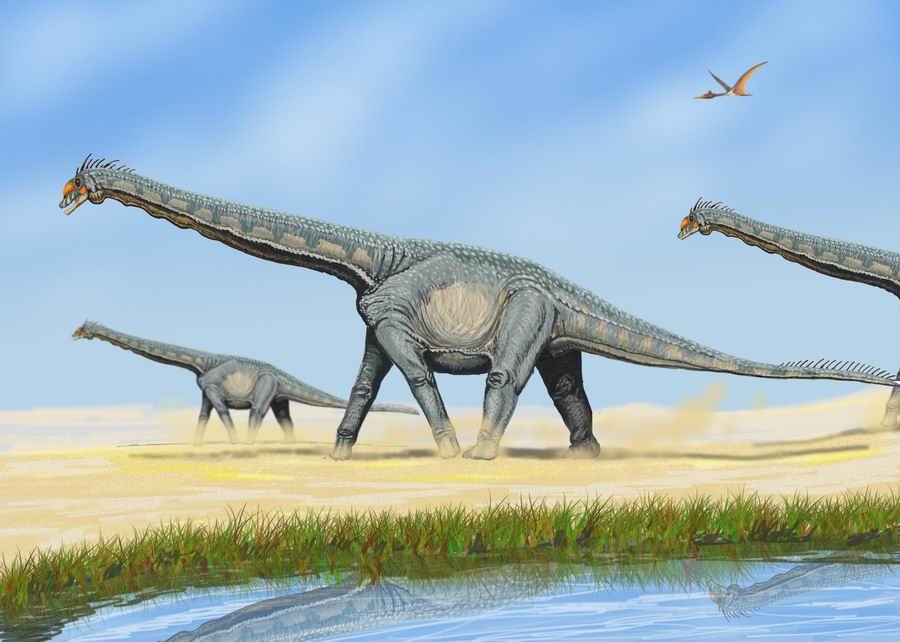We're open daily! View holiday hours
Science News
Extreme Dino Diet
May 12, 2010

The larger an animal is, the more time it spends eating. This means an elephant hardly has time to sleep. It spends 18 hours every day satisfying its huge appetite.
But what would it take to satisfy the appetite of the largest terrestrial animal that ever lived? Weighing ten times more than an elephant, how did it have enough time to eat in a day?
For the first time, new research is offering a plausible answer to the question that’s long riddled paleontologists: how were giant long-neck dinosaurs even able to exist?
According to an abstract published last month in Biological Reviews, “The herbivorous sauropod dinosaurs of the Jurassic and Cretaceous periods were the largest terrestrial animals ever, surpassing the largest herbivorous mammals by an order of magnitude in body mass.”
"They were just so large that a day would have had to have 30 hours so that they were able to meet their energy demands," explains lead author Professor Martin Sander from the University of Bonn in Germany.
So how did sauropods manage with only 24 hours? According to the study, it’s all about evolutionary efficiency. And, don’t tell your mother, but these large dinos didn’t chew their meals, they gulped.
Chewing requires time and a large head, since molars and jaw muscles have to be put somewhere. However, the herbivorous giant dinosaurs had relatively small, light skulls. This meant that sauropods were able to grow extremely long necks, allowing them to make food intake as efficient as possible. They did not constantly have to heave their 80-ton body over the Jurassic savanna while looking for their greens.
Horsetails were part of the sauropods' diet. According to Sander and his team, they are exceptionally nutritious. But only a few animals feed off them today because presumably, horsetails are bad for the teeth. They contain a lot of silica, which acts like sandpaper.
The digestion process itself probably took several days but their stomachs were so large that they still provided them with enough energy round the clock. Moreover, the metabolism of these giant animals was incredibly powerful. They possessed amazingly sophisticated lungs, which were far more effective than those of humans.
The combination of these traits allowed the sauropods to live successfully with a “fast food” diet.
Creative Commons image by DiBgd